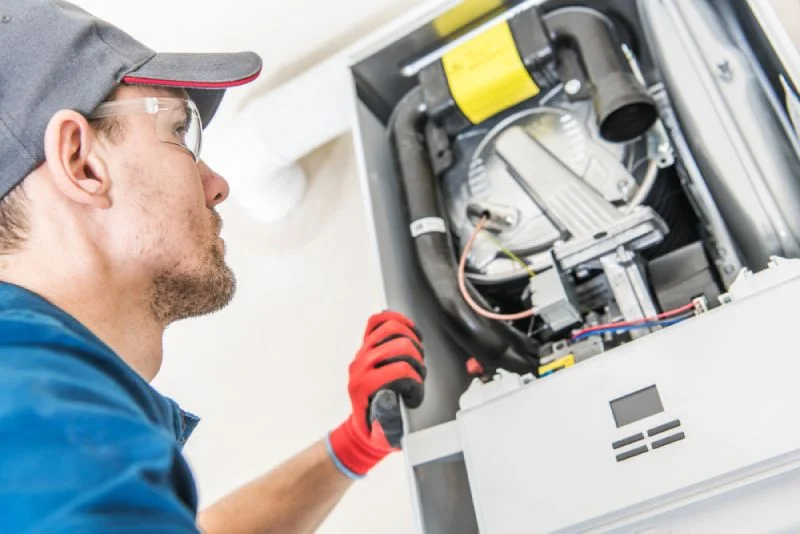When the temperature drops, a lack of sufficient heat in your home can be uncomfortable and even detrimental to your well-being. It’s essential to address the issue promptly to ensure a warm and cozy indoor environment.
In this blog post, we will discuss common causes of insufficient heat and provide heating solutions and troubleshooting tips to help you identify and fix the problem.
Identifying the Causes:
Before delving into solutions, it’s important to understand potential causes of insufficient heat:
- Thermostat Settings: Incorrect thermostat settings or a malfunctioning thermostat can lead to inadequate heat distribution in your home.
- Clogged Air Filters: Dirty or clogged air filters can restrict airflow, reducing the efficiency of your heating system and impeding heat circulation.
- Blocked Vents or Registers: Furniture, rugs, or other objects blocking vents can obstruct the flow of warm air, preventing it from reaching desired areas.
- Leaky Ductwork: Leaks or gaps in your ductwork can cause heat loss, resulting in insufficient warmth in specific rooms or throughout your home.
- Insufficient Insulation: Poor insulation in walls, floors, or attics can allow heat to escape, making it difficult for your heating system to maintain the desired temperature.
- Malfunctioning Furnace or Heat Pump: A faulty furnace or heat pump can result in inadequate heat production or distribution, leading to insufficient warmth in your home.
Furnace Repair Tips
If your furnace is not producing sufficient heat, consider some general repair tips before calling in a professional. Here are a few steps to troubleshoot common furnace issues:
- Check the Furnace Filter: A dirty furnace filter can obstruct airflow and reduce efficiency. Check your filter and replace it if necessary.
- Inspect the Thermostat: Ensure that the thermostat is set to “heat” and that the temperature setting is higher than the current room temperature.
- Examine the Circuit Breaker: If your furnace isn’t turning on at all, it may have tripped the circuit breaker. Check your home’s electrical panel to see if the breaker needs resetting.
- Check the Ignition: Newer furnaces use electronic ignition rather than a standing pilot light. If the ignition fails, the furnace may not produce heat.
- Clean the Flame Sensor: The flame sensor may be dirty if your furnace turns on but doesn’t produce heat. This can be cleaned with a fine abrasive pad.
If you’ve tried these steps and your furnace is still not producing enough heat, it’s time to call a professional. Furnace repair service in Sandy is a reliable and affordable option for residents needing furnace repair or maintenance. Their team of experienced technicians is ready to help you restore warmth and comfort to your home.
Heating Solutions and Troubleshooting Tips:
- Check Thermostat Settings: Ensure your thermostat is set to the desired temperature and heating mode. Ensure the batteries are working, and consider upgrading to a programmable thermostat for more precise control.
- Clean or Replace Air Filters: Dirty filters can impede airflow, affecting heating efficiency. Clean or replace filters regularly to ensure proper airflow and heat circulation.
- Clear Vents and Registers: Remove obstructions like furniture or objects blocking vents to allow warm air to flow freely into your living spaces.
- Inspect and Seal Ductwork: Examine your ductwork for leaks or gaps and seal them with duct tape or professional assistance to prevent heat loss.
- Enhance Insulation: Add insulation to improve heat retention in your home. Insulate walls, floors, and attics using fiberglass, foam, or cellulose insulation.
- Schedule Professional Maintenance: Regular maintenance by a professional HVAC technician can identify and resolve issues with your furnace or heat pump, ensuring optimal heating performance.
- Consider Zoning Systems: Install zoning systems that allow you to control the temperature in different areas of your home independently, ensuring comfort where it’s needed most.
- Use Space Heaters and Heating Blankets: Supplement insufficient heat in specific areas with energy-efficient space heaters or heating blankets to provide localized warmth.
- Upgrade Your Heating System: If your heating system is old or inefficient, consider upgrading to a more energy-efficient model to provide better heat output and distribution.
- Seek Professional Help: If troubleshooting tips don’t resolve the issue, or if you’re unsure about diagnosing and fixing the problem, consult an HVAC professional for a thorough assessment and expert assistance.
By applying these heating solutions and troubleshooting tips, you can improve heat distribution and ensure a warm and comfortable home.
Remember, maintaining a well-functioning heating system and addressing issues promptly will contribute to a cozy indoor environment during colder months.
